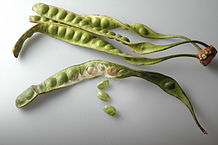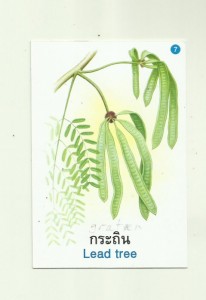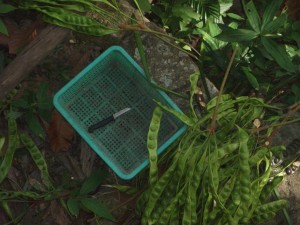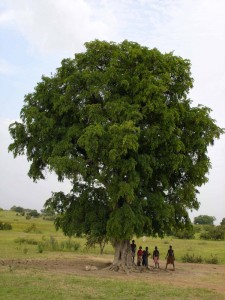The other week, when Mr and Mrs Landlord were harvesting long green things, and I asked what they were called, I’d no idea it would take hours to work out the latest Thai vegetable mystery.
(Photo by Hariadhi)
“What’s it called?” This question sounds simple and I wish it were.
They were at a distance, and I don’t hear well. My hearing aids are useless when they’re in the bathroom and I’m on the balcony. Also, my Thai landlords and I only have a few hundred words in common anyway, so usually it’s a mime game, a comedy, or forget it.
This time, she called and called patiently, while I heard Sataw, Chataw, Krataw, katawn – I don’t know. Katee, kataw, katoo – it was like a drum solo.
Meanwhile, Mrs L sighed with great patience. I wasn’t getting it. What were these damned long green twisted pods called? I extracted my lovely Thai-English vegetable flash cards from the study heap.
They are rather pretty, these cards, say I as both garden and food geek. I found it. It was very close to what’s outside my balcony, had to be a cousin at least. No one in my life has ever heard of a “lead tree”. Let’s get the Thai words straight first:
“No!”Mrs yelled, as I triumphantly presented my evidence. “That no sato (“sah-taw”). That grateen. No same.”
But they look very similar, to me. “Are they – a little bit, the same?”
“No! That sato, this grateen, no same!” She can’t believe how ignorant I am, sometimes. She’s very tolerant, in between being appalled.
The small one’s grateen, pictured above.
The big one’s sato, pictured below, aka
twisted pod bean, bitter bean or stink bean
I’d got the scale all wrong. Through mime and ridiculing my beloved cards, she confirmed that grateen are much smaller, tiny cute fingers, sweeter and tenderer.
You eat grateen pods whole, like a mange-tout or sugar-snap, and they’re used in curries. Three good Thai cooks later confirmed this. I hope to confirm it again in my own mouth.
Grateen grow on low shrubs not regally tall trees like the mighty sato. It was either that idea or Mrs L suddenly launched into interpretative dance.
Their main contrast: character
The gnarly sato is a long as your arm, tough and fibrous. Its reputation is gusty and crude yet strong and admirable. Well, we all know someone like that.
The little princess grateen is delicate if peppery, which is true of me too, as it happens. OK, sometimes so is the gutsy crude thing.
Grateen is “wild tamarind”, not the tamarind of the great majestic tamarind tree, of which the most impressive example I could find was in faraway Ghana:
Photo by Sheldon Navie, c/o treeaid.org
Horse Tamarind, Cow Tamarind, Wild Tamarind
Wild tamarind is a shrubbier, low-growing relation, but a very pretty thing, whose first feathery tiny fronds are so pale green they’re almost florescent, and which get fried up with fish fritter-cakes that are fabulously peppery and totally delicious.
When those are in season around here, the road is lined with pickers, and the deep-frying snack stalls do brisk business, with those who can take the spice.
There are times the mere thought of Thai spiciness makes my eyes sting.
Wild tamarind’s English name is Lead Tree (isn’t that awful?), and the botanical Latin is Leucaena leucocephala.
That’s enough homework for now. More info coming, after I ingest it.
http://migrationology.com/2012/09/the-stink-bean-a-little-smelly-a-lot-of-flavor/
https://en.wikipedia.org/wiki/List_of_Thai_ingredients
http://www.thaicookbook.tv/thai-food-ingredients/vegetables/stink-bean-thai-sato-khao/
https://commons.wikimedia.org/wiki/File:Parkia_speciosa.JPG#/media/File:Parkia_speciosa.JPG
http://www.treeaid.org.uk/our-work/where-we-work/ghana/





0 comments
No comments yet